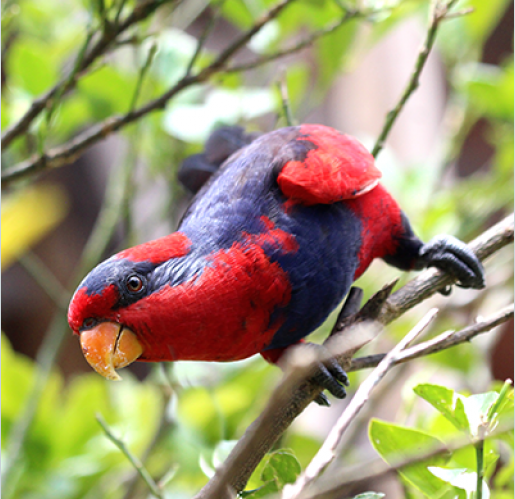Red-and-blue Lories: Conservation Research
Red-and-blue Lory (Eos histrio) numbers have dropped dramatically in recent years due to wildlife trafficking and habitat loss. The most current population assessment was in 1999 at 8200-21,400 individuals. With the rate of decline not slowing down, gathering new data on their numbers is critical.
In collaboration with Pusat Informasi Sampiri (PIS), the WPT aims to identify critical locations on Karakelang and create a map of where the lories’ strongholds persist, to tailor conservation activities where they will be most effective. WPT will help establish key conservation areas centred on habitat use and increase protection measures for these areas. Observing the birds via eco-tourism tours and independent monitoring efforts will also deter poaching, with increased surveillance of the population and their presence in areas they are known to frequent. Villagers in the region will also monitor the wild birds.
Beginning in September 2024, WPT collected data on the distribution, size, ecology and threats of remaining Red-and-blue Lory populations. The census covers 17 key locations across Karakelang and found that the birds are often found in small, fragmented groups, potentially signalling a significant population decline.
IUCN/CITES Status: Endangered / Appendix I
Population: As few as 1000.
Range: Native to Sangihe, Talaud and Nanusa Islands, Indonesia. Nominate on Sangihe likely extinct.
Natural history: Red-and-blue Lories are found in forest and cultivated areas up to 1250 m (4100 ft). Their diet includes coconut, and the fruit and nectar of various trees. Insects are also taken. They are most commonly seen flying in groups of up to eight birds. Large, very vocal numbers gather together to roost.

